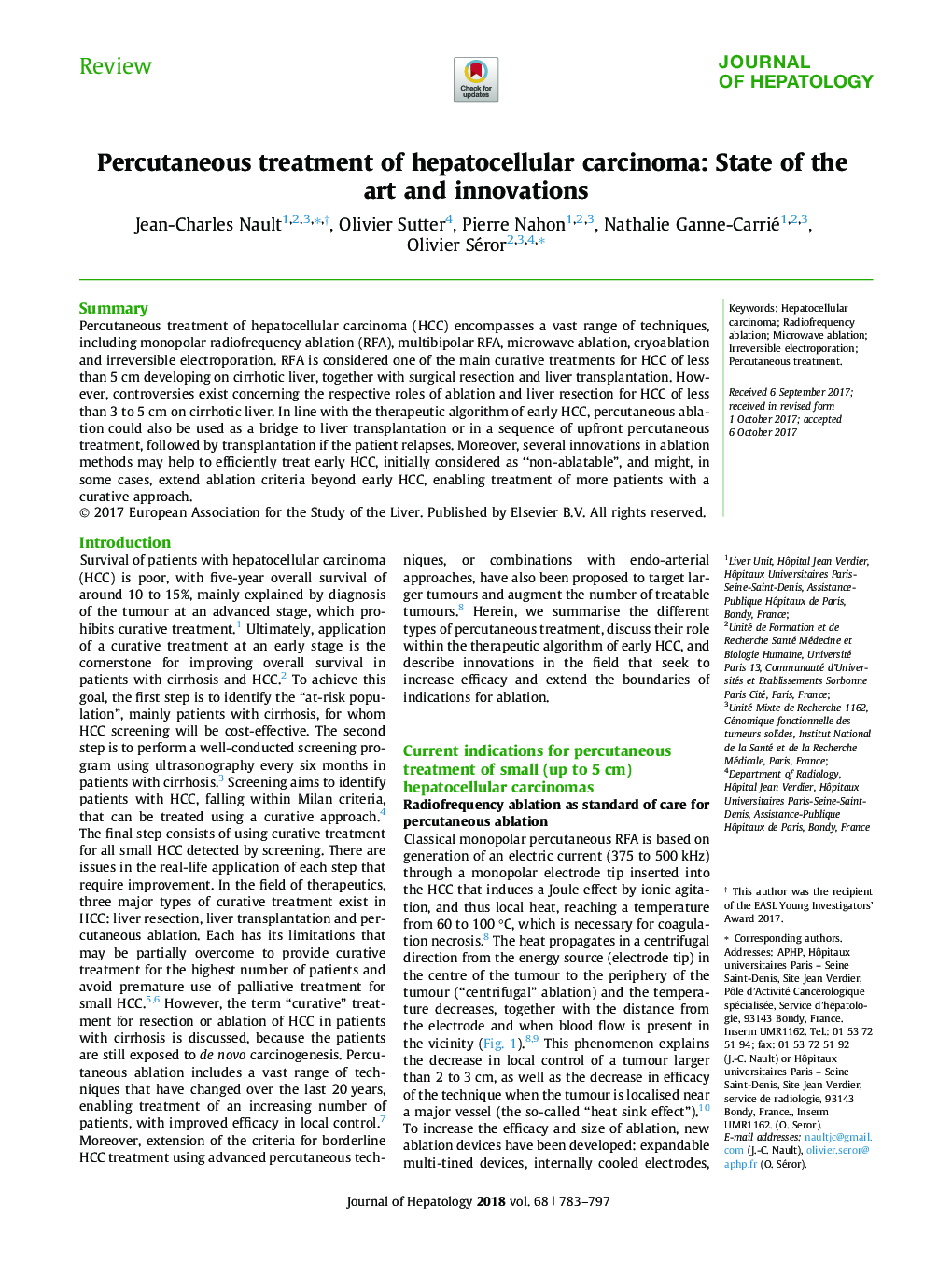| Article ID | Journal | Published Year | Pages | File Type |
|---|---|---|---|---|
| 8729178 | Journal of Hepatology | 2018 | 15 Pages |
Abstract
Percutaneous treatment of hepatocellular carcinoma (HCC) encompasses a vast range of techniques, including monopolar radiofrequency ablation (RFA), multibipolar RFA, microwave ablation, cryoablation and irreversible electroporation. RFA is considered one of the main curative treatments for HCC of less than 5â¯cm developing on cirrhotic liver, together with surgical resection and liver transplantation. However, controversies exist concerning the respective roles of ablation and liver resection for HCC of less than 3 to 5â¯cm on cirrhotic liver. In line with the therapeutic algorithm of early HCC, percutaneous ablation could also be used as a bridge to liver transplantation or in a sequence of upfront percutaneous treatment, followed by transplantation if the patient relapses. Moreover, several innovations in ablation methods may help to efficiently treat early HCC, initially considered as “non-ablatable”, and might, in some cases, extend ablation criteria beyond early HCC, enabling treatment of more patients with a curative approach.
Keywords
Related Topics
Health Sciences
Medicine and Dentistry
Gastroenterology
Authors
Jean-Charles Nault, Olivier Sutter, Pierre Nahon, Nathalie Ganne-Carrié, Olivier Séror,
